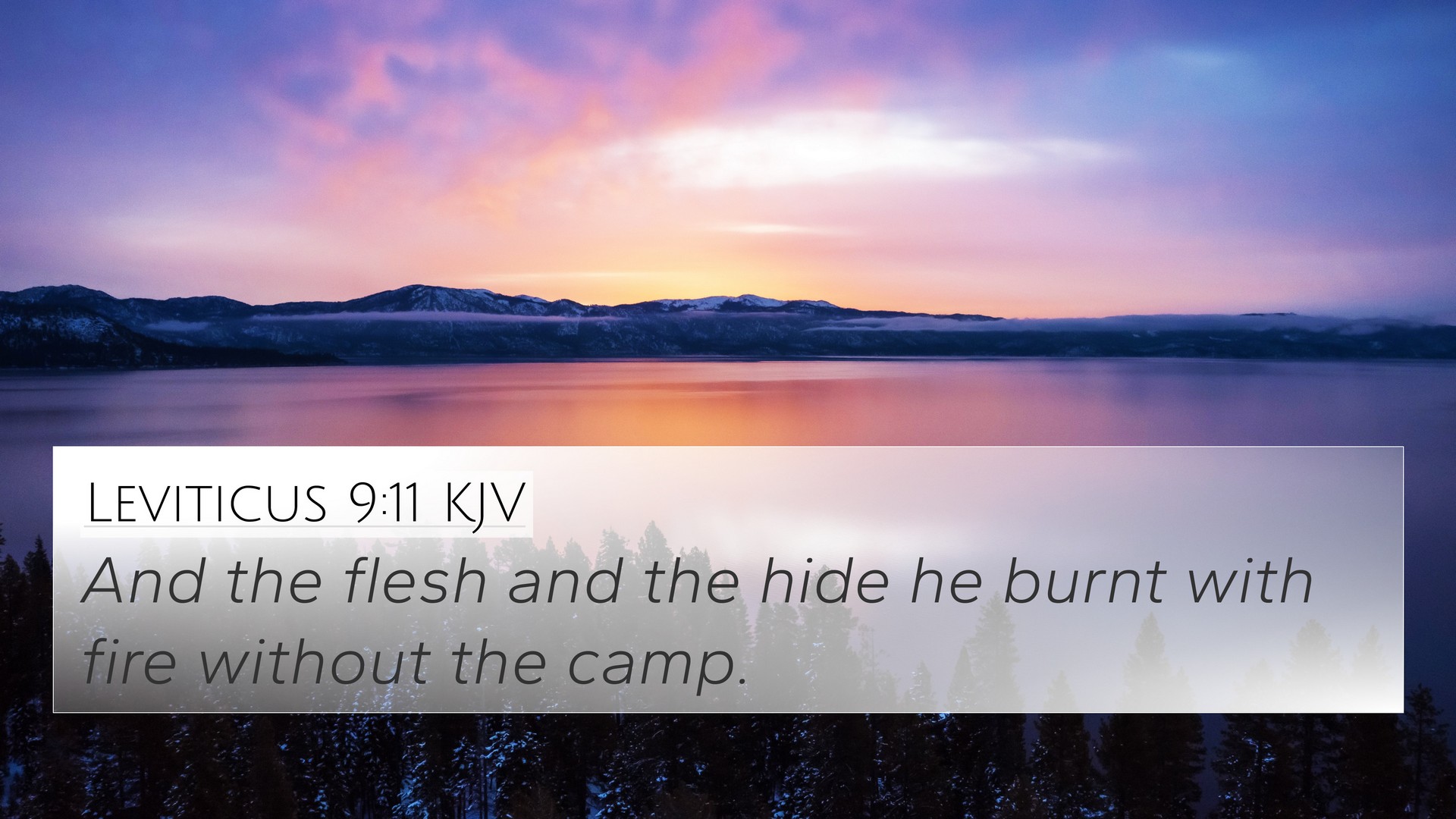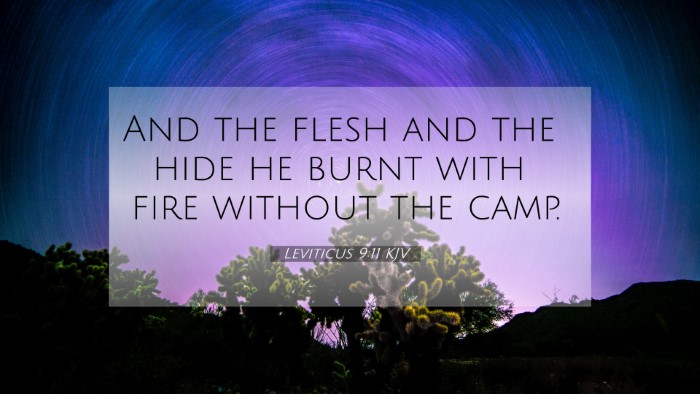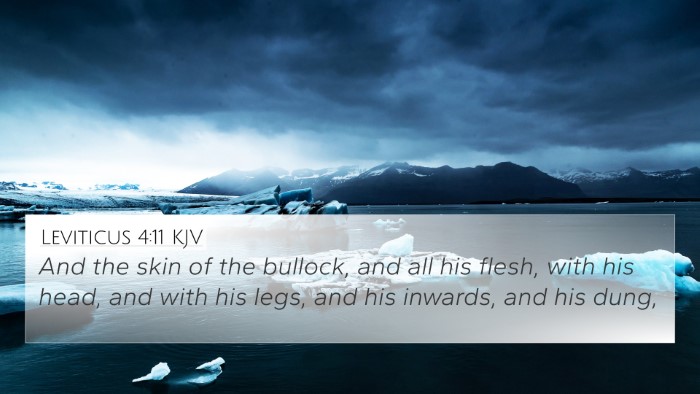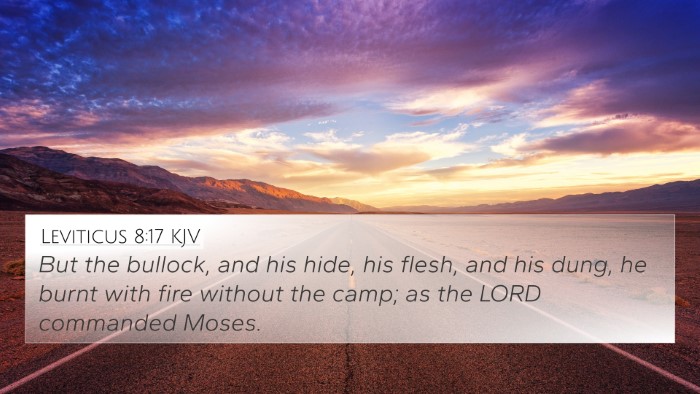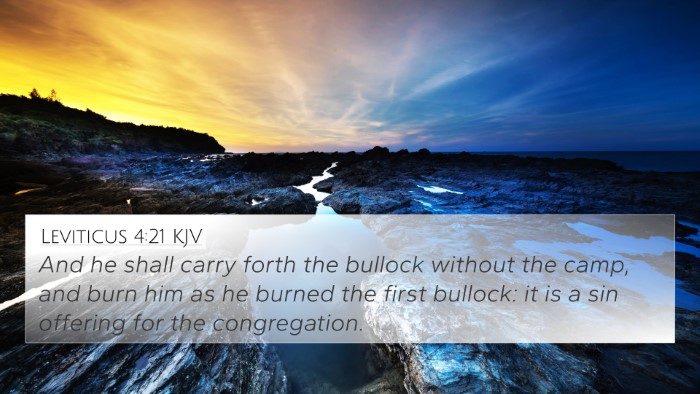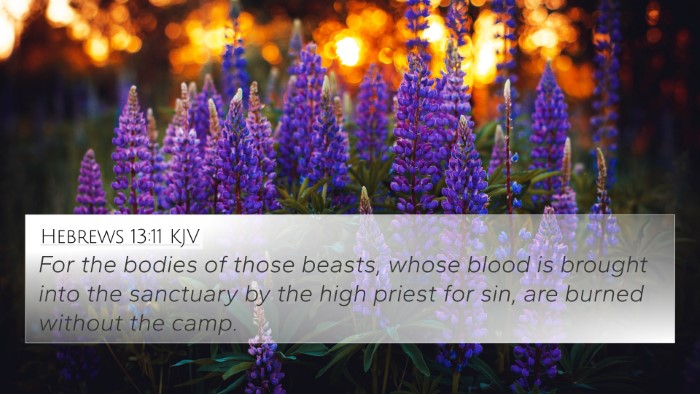Understanding Leviticus 9:11
Leviticus 9:11 reads: "And the flesh and the hide he burnt with fire outside the camp." This verse pertains to the ceremonial laws surrounding sacrifices and offerings within the Israelite community, specifically concerning the sin offering and the purification process.
Contextual Significance
This passage is embedded in the narrative of the consecration of the priests and the initiation of the sacrificial system as ordained by God. Leviticus 9 is pivotal, marking a moment of divine acceptance as Aaron and his sons commence their priestly duties.
Thematic Analysis
- Expiation of Sin: The purification of sin requires a sacrifice, symbolizing the seriousness of sin and the necessity of atonement.
- Covenant Relationship: Sacrifices serve to reinforce the covenant between God and Israel, signifying God's holiness and the people's need for purification.
- Obedience to Divine Instructions: Aaron’s actions demonstrate obedience to God's instructions regarding offerings, which is a recurring theme in Levitical law.
- Foreshadowing Christ: The burning of the flesh and hide outside the camp can be seen as a symbolic foreshadowing of Christ's sacrifice, as discussed in the New Testament (Hebrews 13:11-12).
Commentary Insights
Insights from commentaries provide deeper understanding:
- Matthew Henry: Henry emphasizes the importance of holiness and the need for purification, where the burning of parts outside the camp signifies God’s displeasure with sin and the separation of impure elements.
- Albert Barnes: Barnes notes that the act of burning the flesh outside the camp is a demonstration of the complete removal of sin, highlighting God’s instructions for certain aspects of the sacrificial system being strictly adhered to.
- Adam Clarke: Clarke reflects on the symbolic aspects of sin offerings, indicating that the fire consuming the sacrifice outside the camp conveys the message of total destruction and atonement.
Cross-References to Leviticus 9:11
This verse connects with several other Biblical passages:
- Hebrews 13:11-13: Discusses the significance of Jesus suffering outside the gate, linking to the concept of purification and atonement.
- Leviticus 4:11-12: Details on how the sin offering is to be treated, including the fate of the flesh and hide.
- Exodus 29:14: Instructions regarding the burnt offering and its relevance to purification rituals.
- Numbers 19:3: Discusses the red heifer and its burning, drawing parallels to the sacrificial system related to purification.
- 2 Chronicles 29:21: Mention of similar offerings in the purification of the temple, reflecting the continued observance of these laws.
- Psalms 40:6-8: Emphasizes the importance of obedience over sacrifice, relating to the ultimate purpose of offerings.
- Isaiah 53:10: Foreshadows the sacrificial death of Christ, highlighting the redemptive aspect of sacrifice.
Conclusion on Connection Between Bible Verses
Leviticus 9:11 serves as a critical link in understanding the principles of atonement and purification rooted in Old Testament law, while also establishing connections to New Testament teachings and the work of Christ. This exemplifies the rich inter-Biblical dialogue and the importance of cross-referencing Biblical texts for comprehensive study.
Tools for Deeper Study
For those eager to delve further into this topic, consider using:
- Bible concordance: Helps uncover word and thematic connections between verses.
- Bible cross-reference guide: Offers insights into related scriptures for thorough study.
- Cross-reference Bible study: Engage with multiple passages to enrich comprehension.
- Cross-referencing Bible study methods: Techniques for linking verses effectively.
Through the practice of scriptural cross-referencing, individuals can uncover the intricate layers of Biblical themes, enhancing their understanding and ability to articulate the relational dynamics of scripture.
